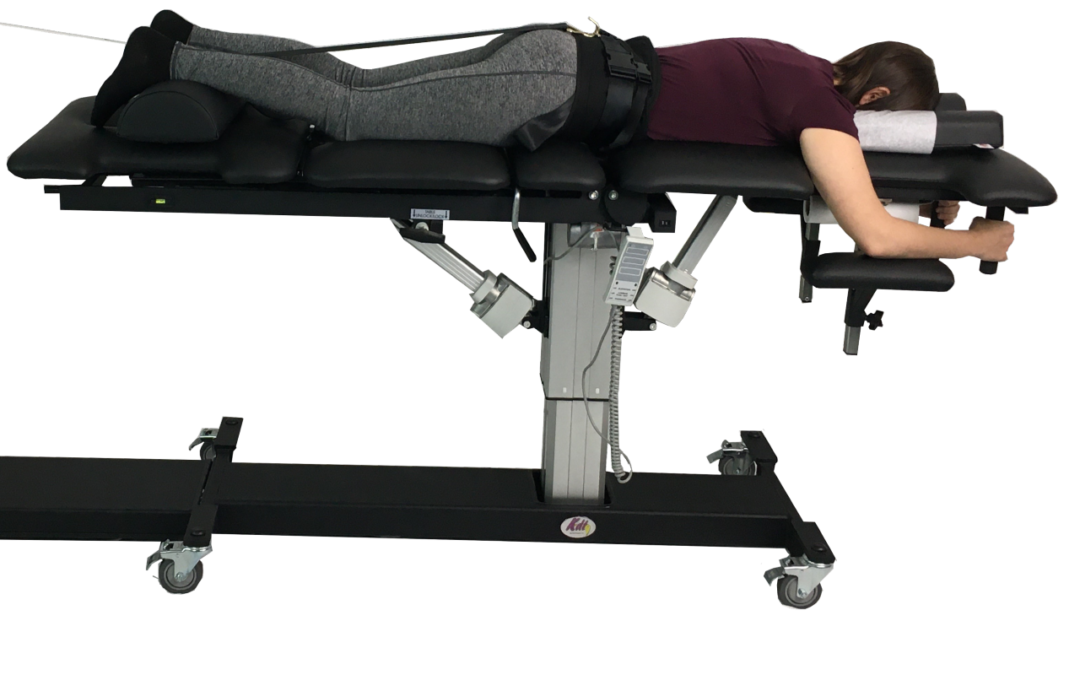Our spine is made up of several vertebrae segments lined one on top of the other around the spinal cord with its nerves and discs in between each one for mobility. The discs have 2 layers. The outer layer is strong and protects the inner layer. The inner layer is filled with fluid which helps absorb shock and pressure applied by the vertebrae upon movement.
The spinal cord’s nerves go through the gap the disc provides to not get stuck between the vertebrae. But, sometimes, due to a variety of reasons, the nerves still get stuck or pinched leading to sensations of pain shooting up from the nerve to the brain.
Radiculopathy refers to the condition of a pinched nerve along any part of the spinal column (cervical, thoracic, or lumbar).
This condition is usually characterized by pain, numbness, tingling, and weakness.
The most known causes for radiculopathy include:
- Obesity
- Age
- Posture
- Occupation
- Repetitive motions
- Degenerative disorders (bones or disc)
- Lifting heavy things
- Herniated disc
- Spinal tumors
- Bone spurs
- Sciatica
- Arthritis
- Spinal stenosis
- Injuries
- Scoliosis
- Diabetes
- Spondylolisthesis
- Cauda equina syndrome
There are three types of radiculopathy, depending on the location of the pinched nerve:
- Cervical radiculopathy: When a nerve in the neck is compressed or irritated.
- Thoracic radiculopathy: pinched nerve in the upper back area which causes tingling and pain radiating to the front of the body.
- Lumbar radiculopathy: This is the most common type of radiculopathy due to the lower back being the most under pressure.
Radiculopathy isn’t usually much of a problem at the earlier stages but can become a disability if left to develop and not treated, to the point where daily activities can seem like a burden.
Doctors may suggest steroid injections, weight-loss strategies, medications, and surgeries.
But these all have their own set of downfalls.
- Steroid injections and meds are temporary and can be addictive.
- Weight Loss strategies take too long to be effective and can be ineffective if the cause isn’t our weight.
- Surgeries can prove to be very expensive, take too much recovery time, and be unsuitable for many people, especially since it is invasive.
There is another solution, spinal decompression.
Spinal decompression therapy has the chiropractor stretching the spine in certain angles, directions to have the spine elongate, and there to be negative intradiscal pressure-formed so the disc fills up with nutrients, oxygen, the circulation gets
improved, the vertebrae, disc, etc. pop back into place and there is no more pressure applied on the nerves due to restoration of the gaps and cushion in the spine.
The benefits of spinal decompression:
- Non-invasive
- Effective
- Less expensive
- Long term results and no side effects
- Improve posture and body healing in a natural way
- Increases range of motion and body circulation
- The body’s immunity increases
- The entire body’s functioning is improved
- Body resistance to future damage and pain increases.
- Suitable for all ages and most health conditions
- Relieves pain
- Could gain valuable insight on the lifestyle and nutritional benefits with the chiropractor’s tips
The focus of the treatment is to help the body heal itself.
So, book an appointment with your nearest licensed chiropractor now.
Happy healing!

